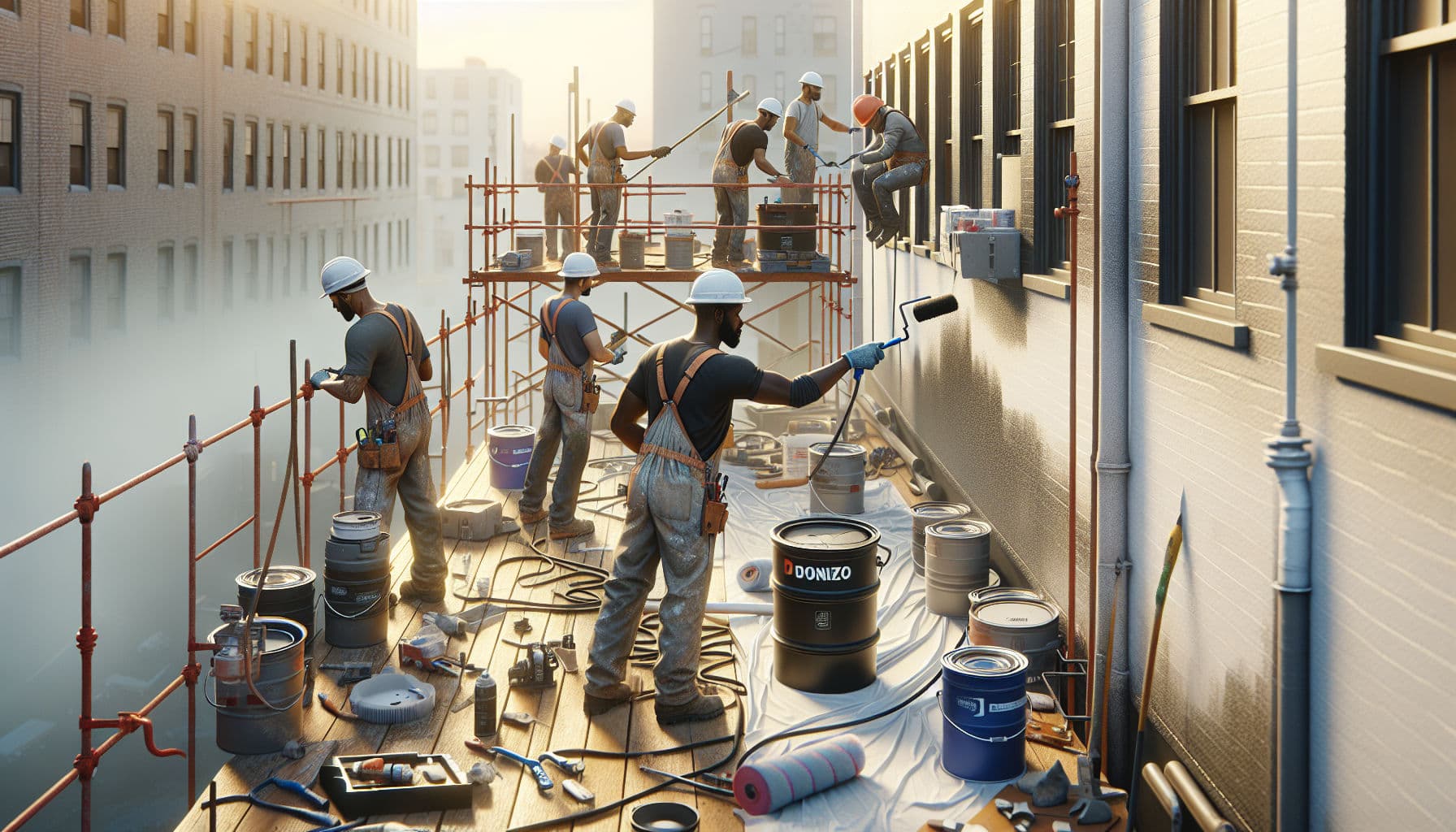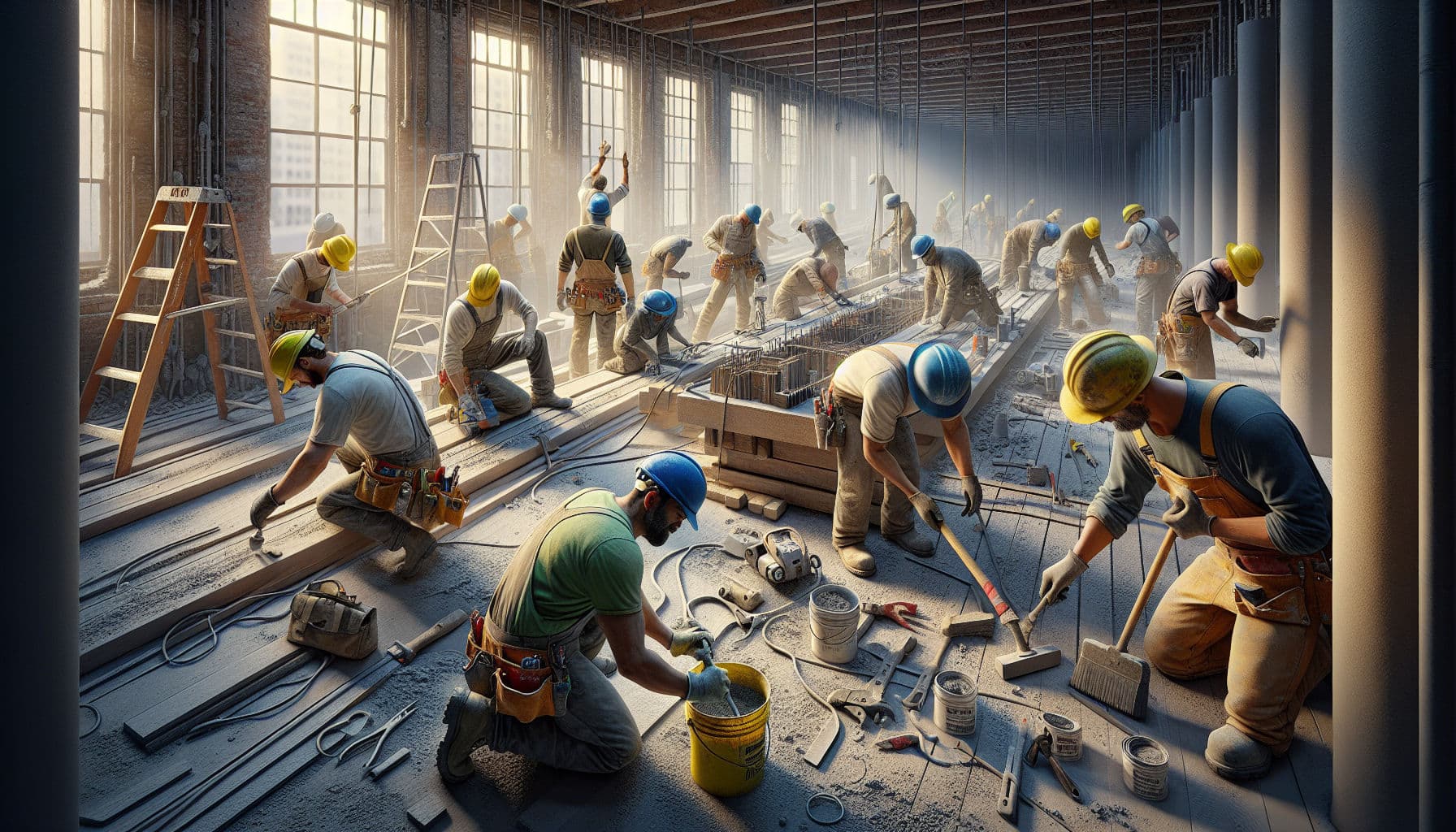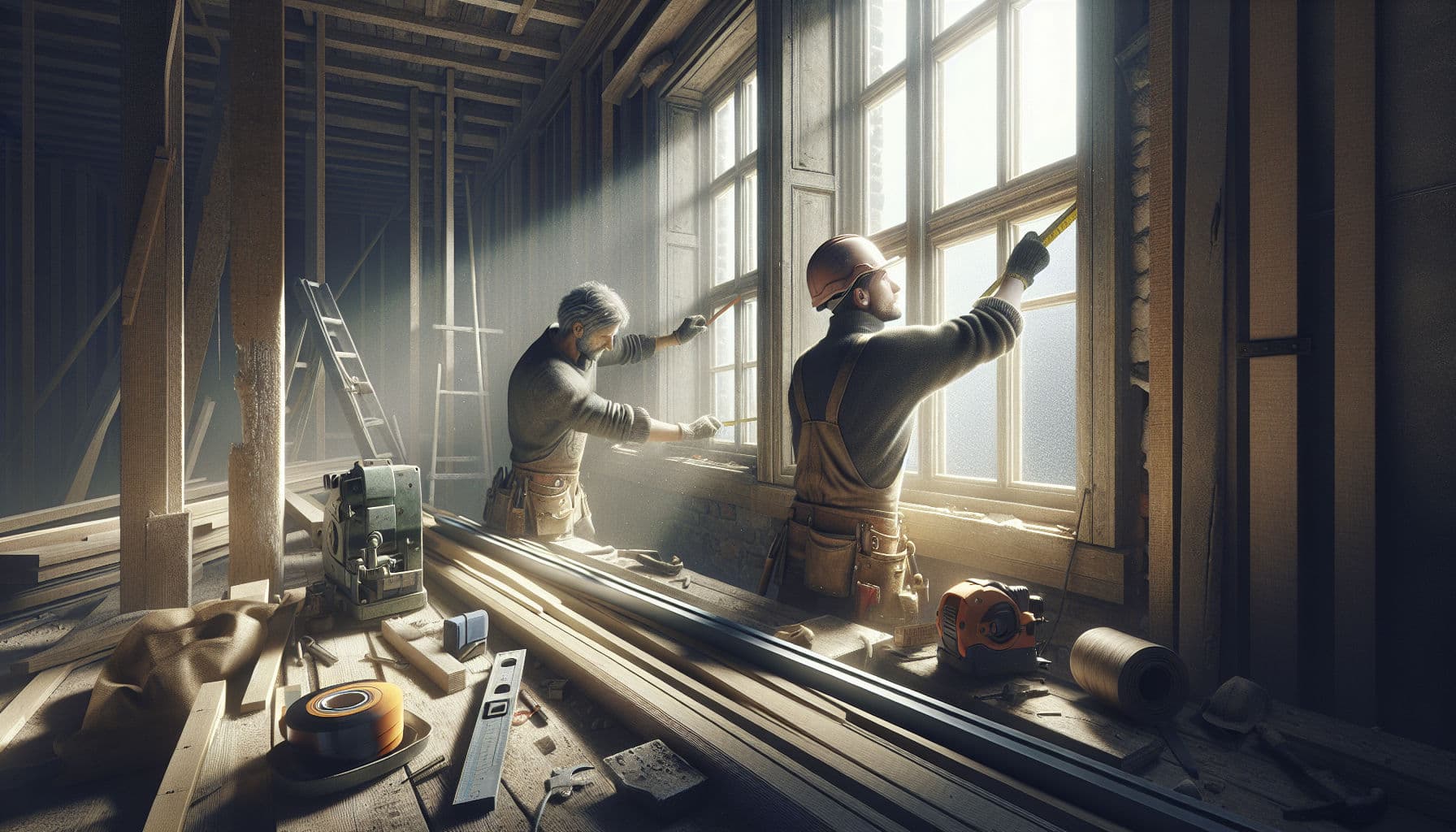Exterior Painting Weather Rules That Stick (2025)
Field-tested weather rules for exterior painting that prevent failures, cut call-backs, and protect margins. Practical thresholds, tools, and workflows.

Introduction
Weather is the number one silent killer of exterior paint jobs. When temperature, humidity, wind, and dew point are off, coatings underperform—leading to blistering, peeling, and costly call-backs. This guide explains exactly what to measure, why it matters, and how to plan your work so paint cures correctly. You’ll get precise thresholds, practical tools, and scheduling tactics. We also show how to document weather windows and scope clearly so clients understand timing, using quick, voice-driven proposals.
Table of Contents
- Key Takeaways
- Weather Physics That Make Or Break A Paint Job
- Set Your Weather Window: Temperature, Dew Point, Humidity
- Rain, Wind, And Sun: Plan For Exposure
- Substrate Moisture: Wood, Stucco, And Metal
- Scheduling And Documentation That Prevent Call-Backs
- Frequently Asked Questions
- Conclusion
Key Takeaways
- Weather drives coating success: keep surface temp ≥ 3°C/5°F above dew point and RH ≤ 85% to avoid condensation and slow cure.
- Typical acrylic minimum surface temperature is 7–10°C (45–50°F); low-temp acrylics can go to ~2°C/35°F—always confirm the TDS.
- Plan rain-free windows: 4–8 hours for most exterior acrylics; 12–24 hours for alkyds. Wind over 15 mph increases defects and overspray risk.
- Wood should be ≤ 15–18% moisture content; fresh stucco often needs 14–28 days to cure and ≤ 4–5% moisture before coating.
- Clear weather windows and prep notes in proposals reduce disputes; many contractors report 20–30% fewer call-backs when documenting conditions.
Weather Physics That Make Or Break A Paint Job
The Problem
According to industry experience, weather-related failures are consistently a top-three cause of exterior repaint call-backs. Research indicates rework can consume 5–10% of construction spend, and coatings applied outside spec are a common driver. The root issues: condensation at the film, solvent/water entrapment, and too-slow coalescence in high humidity or low temperatures.
The Solution
- Measure the surface temperature, not just air temperature.
- Compare surface temperature to the dew point: maintain a delta of at least 3°C (5°F).
- Keep relative humidity at or below 85% during application and initial cure.
- Follow the coating’s technical data sheet (TDS) for temperature and dry-time.
Technical Details
- Dew Point Rule: If surface temp is within 3°C/5°F of dew point, delay work—condensation risk is high.
- RH Threshold: Above ~85–90% RH, waterborne paints can struggle to form a proper film, extending dry times significantly.
- Thermal Gain: Dark substrates in direct sun can run 10–20°C (18–36°F) hotter than ambient. Shade planning matters.
Example
A crew in a coastal zone shifted start times from 7:30 a.m. to 10:00 a.m. on dewy spring mornings to maintain a ≥ 5°F dew point margin. Result: zero early-morning blistering incidents over 12 weeks and two fewer call-backs (saving roughly €1,100 in labor and materials).
Set Your Weather Window: Temperature, Dew Point, Humidity
The Problem
Applying within the wrong temperature/RH window leads to poor adhesion, surfactant leaching, and extended dry times. Many failures trace back to misreading manufacturer minimums or ignoring microclimate conditions (shade vs sun, masonry thermal lag).
The Solution
Use the product TDS for exact ranges and plan crews around a strict window.
| Paint Type | Typical Min Surface Temp | Recommended Max RH | Typical Rain-Free Window |
|---|---|---|---|
| Standard Acrylic Latex | 7–10°C (45–50°F) | ≤ 85% | 4–8 hours |
| Low-Temp Acrylic Latex | ~2°C (35°F) | ≤ 85% | 4–8 hours |
| Alkyd (Solvent-Based) | 10–13°C (50–55°F) | ≤ 85% | 12–24 hours |
How To Measure Accurately
- Surface Temp: Infrared thermometer on substrate, multiple points.
- Dew Point: Use a jobsite weather app or handheld meter calculating dew point from temp/RH.
- RH: Hygrometer readings near the workface, not from a distant weather station.
Example
A small team planned a 3-day exterior using a 50–85°F, ≤ 80% RH window. They shifted trim painting to mid-day to avoid morning dew and late-day RH spikes. Outcome: On-time completion and no surfactant leaching marks, avoiding a €350 touch-up.
Rain, Wind, And Sun: Plan For Exposure
The Problem
Unexpected showers, high winds, and harsh solar exposure cause surfactant leaching, lap marks, pinholing, and poor film formation. Wind above 15 mph increases overspray and uneven coverage; direct sun can flash-dry the film.
The Solution
- Rain Forecast Buffer: Only paint with a clear 4–8 hour window for acrylics and 12–24 hours for alkyds.
- Wind Limit: Target ≤ 15 mph (24 km/h); use wind breaks where feasible.
- Sun Management: Work the façade in shade bands; follow the sun around the building to keep surfaces out of peak solar loads.
Field Controls
- Use extender/additives per TDS to manage open time in heat and wind.
- Lightly mist hot, porous surfaces before acrylic application if allowed by TDS.
- Choose roller sleeves that maintain wet edge in windy conditions.
Example
On a south-facing elevation with afternoon sun, a crew ran a clockwise sequence to stay in shade and paused when gusts exceeded 16 mph. They avoided lap marks and overspray complaints, keeping production near plan (within 3%).
Substrate Moisture: Wood, Stucco, And Metal
The Problem
Even with perfect weather, wet substrates drive adhesion failures. Wood swells and outgasses; masonry holds bound water; metal can sweat near dew point.
The Solution
- Wood: Paint at ≤ 15–18% moisture content (MC). Use a pin-type moisture meter.
- Masonry/Stucco: Observe cure periods (often 14–28 days for new stucco) and paint at ≤ 4–5% moisture by mass; verify with a masonry moisture meter.
- Metal: Ensure surface temp ≥ 3°C/5°F above dew point; dry wipe and solvent-clean per coating spec.
Prep Standards That Matter
- Remove chalking: ASTM D4214 chalk rating; if heavy, wash and prime with bonding primer.
- Salt/efflorescence: Neutralize and rinse thoroughly; allow to dry to target moisture before coating.
Example
A repaint over cedar siding initially read 22% MC after rain. The team delayed priming 48 hours and used fans for spot drying to reach 16–17% MC. Result: strong primer adhesion and no peeling after the first winter.
Scheduling And Documentation That Prevent Call-Backs
The Problem
Clients often push for speed during marginal weather. Without clear documentation of weather windows and cure times, disputes arise when defects appear.
The Solution
- Publish a Weather Window: Include minimum temps, RH limit, dew point margin, and rain-free hours in your proposal.
- Add Flex Days: Build 10–20% weather contingency into the schedule during shoulder seasons.
- Log Conditions: Note temp, RH, dew point, wind, and substrate MC at start/finish of each elevation.
Practical Tools
- Handheld: Infrared thermometer, hygrometer/dew point meter, moisture meters for wood and masonry.
- Documentation: Daily photos of thermometers/meters and façade orientation.
- Proposal Workflow: Use Donizo to capture site conditions by voice, attach photos, and generate a clear, branded PDF proposal. Clients can e-sign digitally, and once accepted you can convert the proposal to an invoice in one click.
Example
A three-person crew added a standard “Weather & Cure Window” section to every exterior proposal and logged conditions daily. Over one season they reported 25% fewer weather-related disputes and a 12% drop in touch-up labor. Using Donizo’s voice-to-proposal, they documented conditions in under 3 minutes per job, saving 2–3 admin hours per week.
Frequently Asked Questions
Can I Use Low-Temp Acrylics Near Freezing?
Yes—many low-temp acrylics are rated to around 2°C (35°F). You must still keep the surface temperature at least 3°C/5°F above dew point and maintain RH ≤ 85%. Always confirm the specific product’s TDS for minimum temperature and recoat time.
How Long After Rain Can I Paint Exterior Wood?
Measure, don’t guess. Target wood MC ≤ 15–18%. In cool, humid conditions, siding may take 24–72 hours to reach that range. Sun and airflow speed drying; shaded north elevations dry slowest.
Is Painting In Direct Sun Really A Problem?
Often, yes. Dark substrates can run 10–20°C (18–36°F) hotter than ambient, causing rapid surface skinning, lap marks, and poor leveling. Work façades in shade and use extenders per TDS when heat and wind are high.
What Wind Speed Is Too High For Spraying?
Above 15 mph (24 km/h), overspray and uneven coverage risk rise sharply. Either switch to rollers and brushes, install wind breaks, or reschedule.
What Should I Include In My Proposal About Weather?
Spell out minimum surface temperature, max RH, dew point margin (≥ 3°C/5°F), rain-free hours, and that schedules may shift to meet these conditions. With Donizo, you can dictate these points on-site and generate a professional proposal for e-signature fast.
Conclusion
Exterior coating success is mostly about respecting physics: temperature, humidity, dew point, exposure, and substrate moisture. When you measure and plan for these, you cut call-backs, protect margins, and deliver durable finishes. Document your weather window and prep steps clearly. With Donizo, you can capture site conditions by voice, add photos, generate and send a branded PDF proposal for e-signature, and convert the accepted proposal to an invoice in one click—saving hours while keeping clients aligned.





